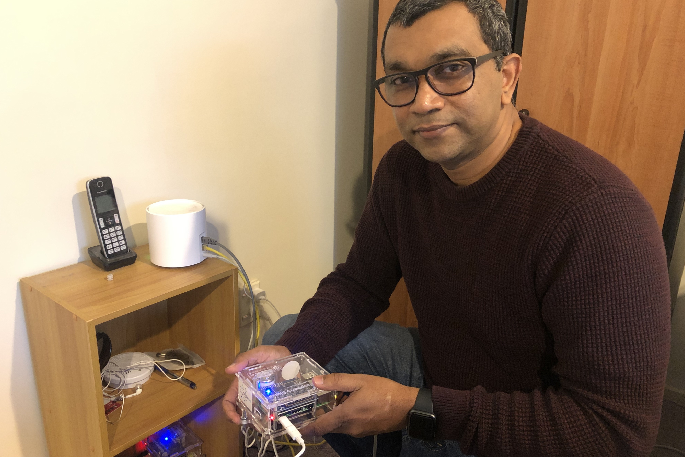New Zealand scientists working on an experimental earthquake warning system using low-cost sensors are excited to share their discoveries in a globally leading journal.
The project, co-funded by the Earthquake Commission (EQC) and Massey University, has enabled a group of scientists to develop new earthquake early warning (EEW) system architecture where clusters of low-cost seismometers can issue earthquake early warnings at the local level.
'Developing a simple but robust network of sensors where all the detection algorithms are working at the sensor-node itself is a big step forward in helping us towards developing innovative early warning systems,” says lead researcher from the Joint Centre for Disaster Research at Massey University, Dr Raj Prasanna.
The team this week published their initial research findings in Informatics, a high-profile Swiss-based open access journal on information and communication technologies in an article titled 'Saving Precious Seconds, A Novel Approach to Implementing a Low-Cost Earthquake Early Warning System with Node-Level Detection and Alert Generation'.
Dr Prasanna says the research team comprises of seismologists, computer and telecommunication engineers, as well as other subject matter experts from New Zealand and overseas, who will provide open access to all the source codes they have developed and hope that their domestic and international collaborators and supporters will enable them to advance their project at a faster pace.
'This project has become much bigger than what we were originally anticipated, and it has created several other aligned projects, including school outreach and internships,” Dr Prasanna says.
EQC's Research Manager, Dr Natalie Balfour, says the results of this research will give a broad picture of the social, as well as the technical aspects of a community-networked earthquake warning system.
'The findings and outcomes will contribute to EQC's mission of reducing the impact on people and property and building resilience to natural hazards,” Dr Balfour says.
Last year, the research team worked with local communities using low-cost seismometers to identify appropriate locations to test the sensor network architecture.
Despite being hampered by Covid-19 restrictions, the small number of seismometers installed in Wellington and the Wairarapa area provided the scientists with an opportunity to develop effective new earthquake early warning architecture to analyse and validate its performance.
'Over the last two years, we have been working with experts in all areas, from researchers in a variety of fields to sensor manufacturers.”
'Experts in New Zealand and all over the world have been so supportive and shared their findings, so this project has created a new community of practice consisting of a strong network of people who have similar interests on the same problem focussing on earthquake early warning systems. This was not what we expected and is hugely exciting.”
The team has successfully applied for more funding to continue their research and will soon be installing 20 more seismometers across the lower North Island to expand their experiments and finetune their data.
Dr Prasanna says that his team is looking forward to strengthening and expanding engagements with other potential collaborators in New Zealand and internationally, including researchers and sensor manufacturers.
Dr Balfour adds that the research is unique because it explores innovative ways to solve some of the technical challenges of EEW systems and also engages with the community to get them involved in the system.
'This study contributes to community resilience by directly involving them in the project and in the process helps improve understanding about living with natural hazards and what to do when an earthquake occurs,” she says.



0 comments
Leave a Comment
You must be logged in to make a comment.